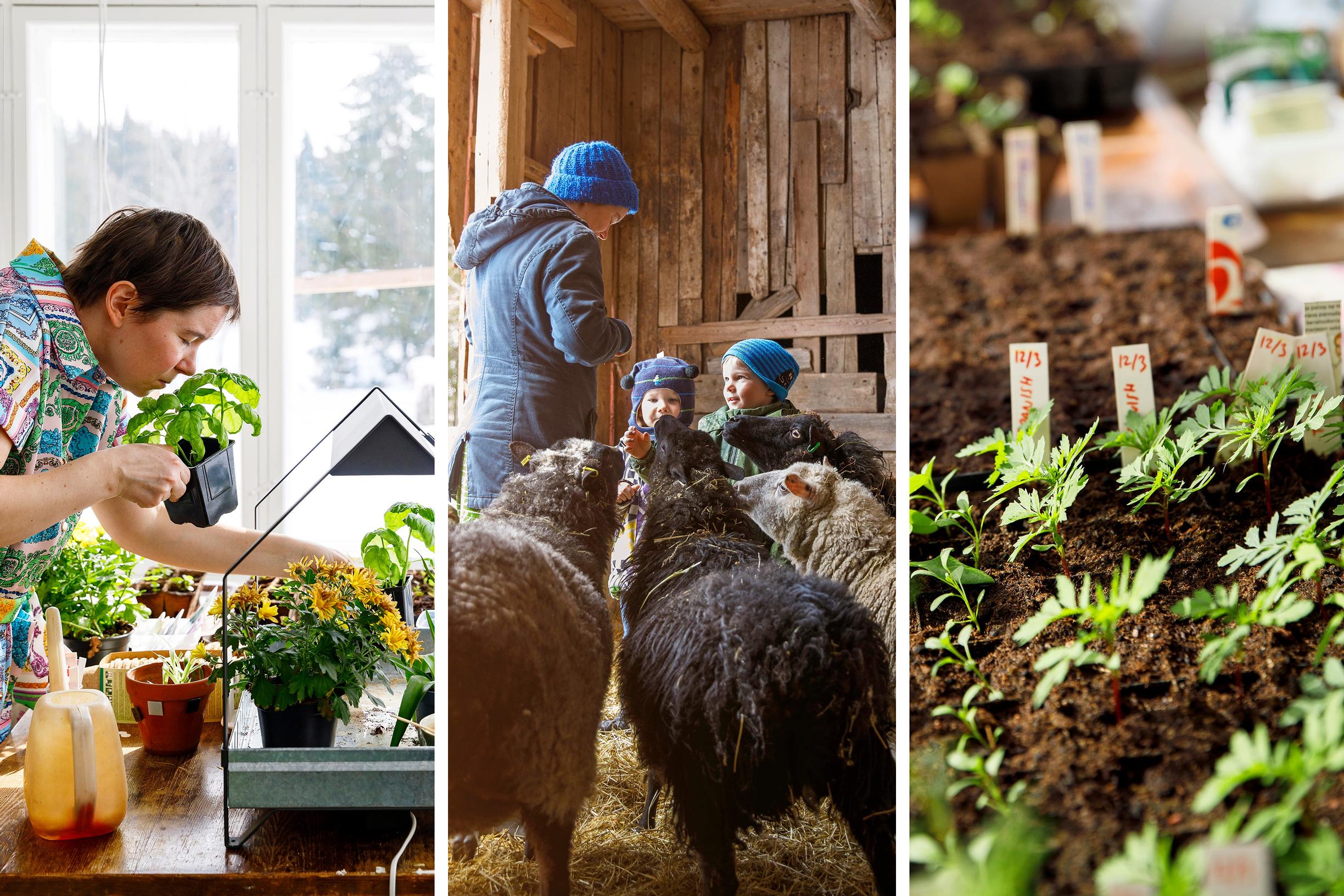
A self-sufficient family: “From July to November, the only thing we buy are dairy products”
Kaisa and Kim’s family of five lives nearly self-sufficiently from July to November. Working with nature—rather than against it—is what matters most, the couple says.
On the warm veranda, delicate seedlings stretch toward the light, with a promise of the coming summer and harvest. From the soil emerges a variety of cabbages and edible flowers: sea kale, Brussels sprouts, cauliflower, asters, and marigolds.
“This is only some of the seedlings. And we still have a lot more to sow. There’s about 150 square meters of vegetable patches in our yard,” Kaisa Karjalainen, 35, explains.
Kaisa, who lives in Vesilahti near Tampere, Finland, has been growing vegetables, fruit, and berries in her home garden with her spouse Kim Paananen, 36, for a couple of years. In the yard of their old 1920s farmhouse, seven ewes also roam around, six of which will soon have lambs.
The couple’s goal is to produce as much of their own food as possible. From mid-July through early November, this family of five is almost entirely self-sufficient. The only products they buy from the store are dairy.
Even after November, their cabinets remain stocked with homemade jams and juices, pickles, and dried herbs. In the freezer, lamb, foraged mushrooms and berries, and vegetables last well into the later months.
“From March through April, our self-sufficiency is at its weakest. By May, we can already pick wild herbs. Stinging nettle can be used like spinach, and leopard’s bane goes well in a pie,” Kaisa says.
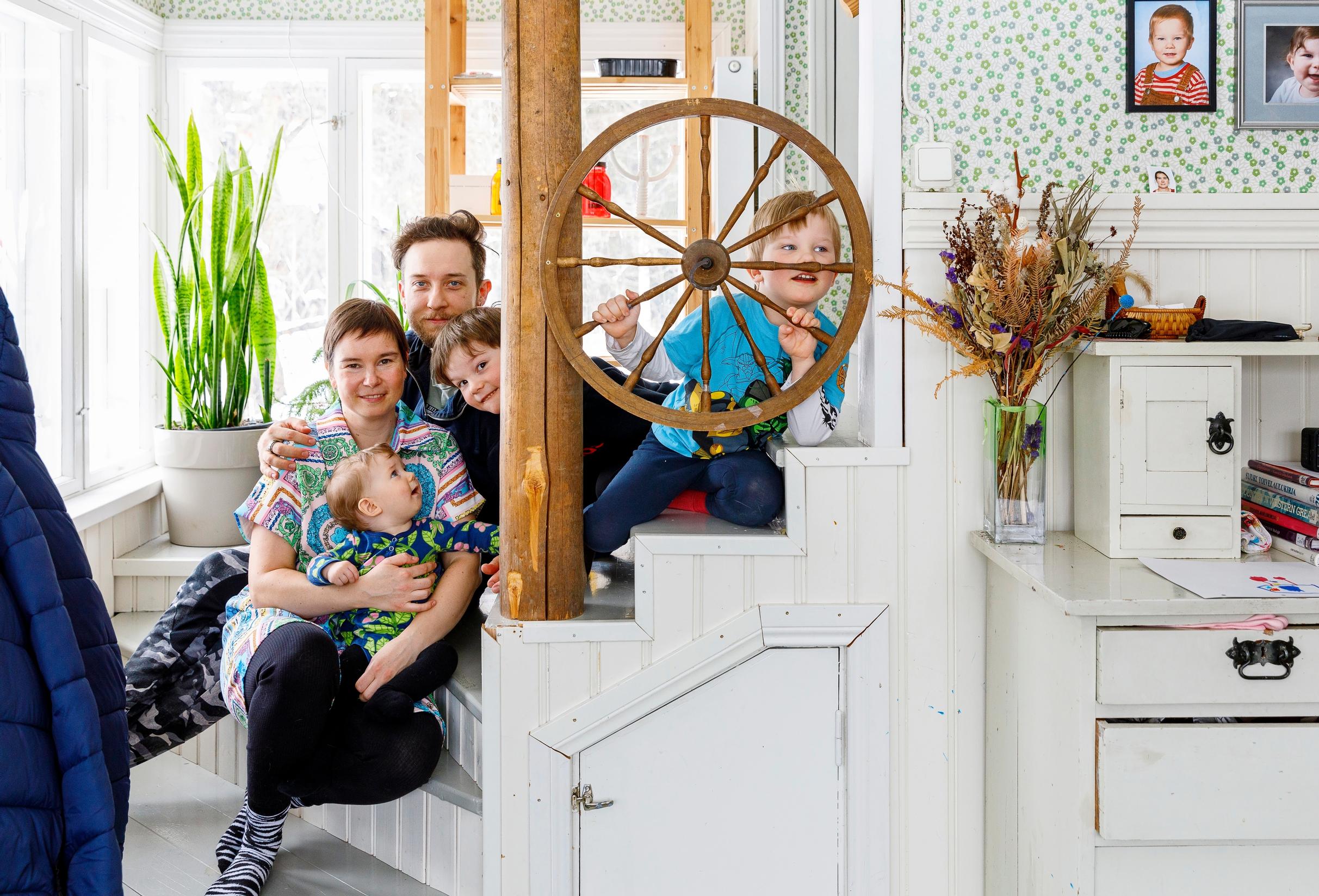
Who lives here: Transition coach Kaisa Karjalainen, 35, and engineer Kim Paananen, 36, Kaapo Paananen, 5, Touko Paananen, 4, Selma Paananen, 7 months, the cat Kisu, and the dogs Uuno and Lyyti.
Home: a detached house in Onkemäki, Vesilahti, built in 1924. Protected by the Finnish Heritage Agency, the house has five rooms and a kitchen.
Square meters: 144.
Favorite spot: “The spacious main room—that is, the living room—is the most used space in our home.”
Eyesore: “The window frames on the south side of the house need a new coat of paint.”
Housing costs: €250 a month.
Number of bathrooms: 2.
Gardening and growing food gained new popularity during the pandemic. The war in Ukraine and the threat of a global food crisis have also led many to consider self-sufficiency.
For Kim and Kaisa, however, fear is not the reason they grow their own food.
“Of course, the news from Ukraine has made us think it’s a good thing we produce our own food,” Kim says.
“But our main motivation has been to maintain our connection to nature and protect the environment. We want to leave the soil and our surroundings in better condition than when we found them,” Kim says.
“By growing our own produce, we work with nature, not against it,” Kaisa adds.
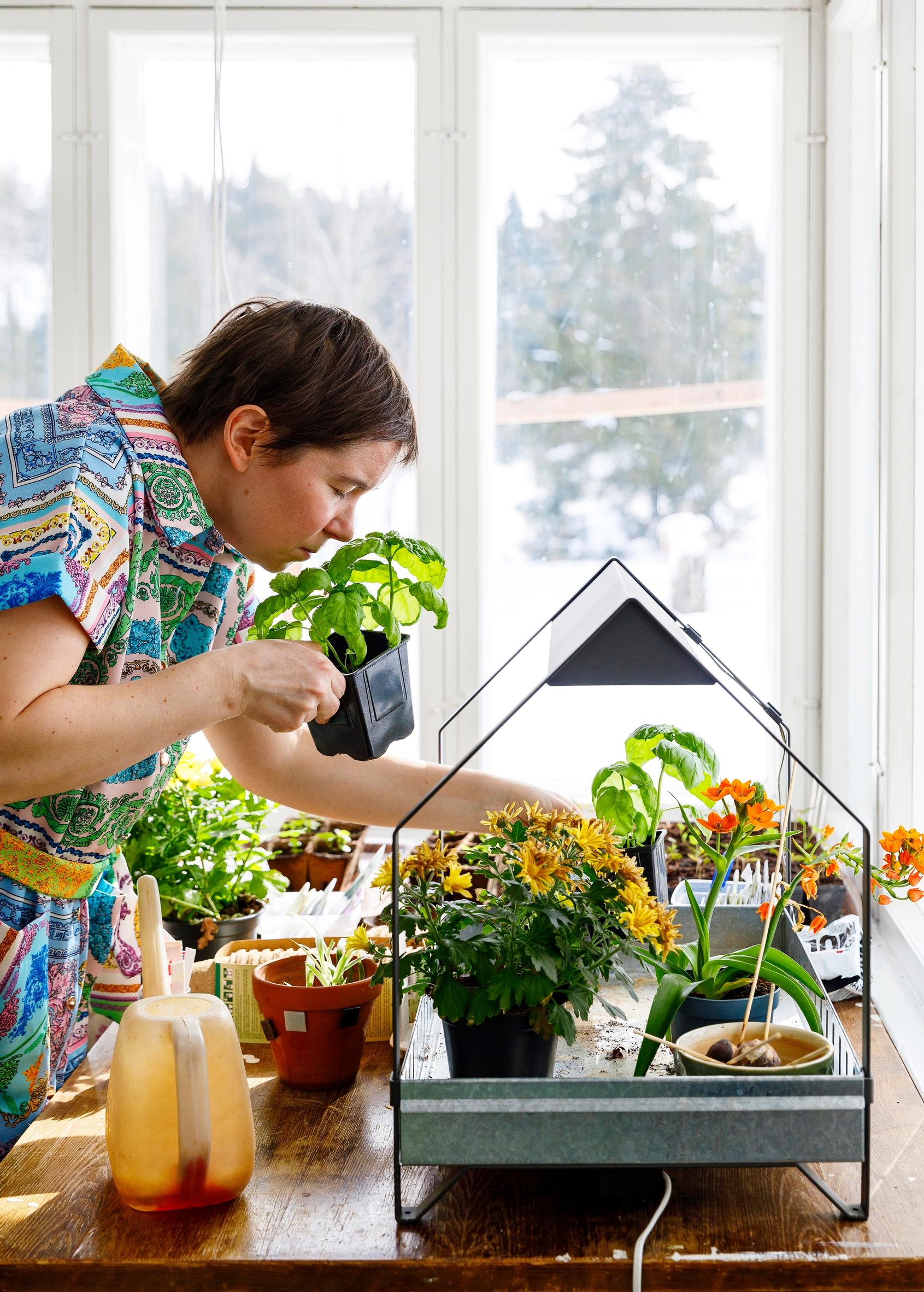
The couple set up their garden using a novel method that disturbs the soil as little as possible. In the no-dig method—also known as permanent bed cultivation—the soil isn't turned or hoed. Instead, the bed is created by smothering weeds and enriching the soil with compost.
The couple’s garden plots are fertilized with well-composted manure from their own sheep.
In spring and summer, their vibrant yard also attracts insects, which are followed by birds. Thus, the garden enriches both the local biodiversity and soundscape. Insects buzz and hum around the vegetable beds, while birds sing in the trees.
Beyond environmental benefits, Kaisa and Kim also find a lot of personal fulfillment in being self-sufficient.
“It feels wonderful to sink your hands into the soil. It’s also thrilling to witness the miracle of growth—how a tiny seed can become a fruitful plant. On summer evenings, I love strolling around to admire the plants and watch the insects at work. The twilight makes the atmosphere feel almost magical,” Kaisa says.
“Growing your own allows you to have exactly what you want,” Kim continues. “You won’t find sea kale, the purple-tinged orache, or climbing spinach at the store.”
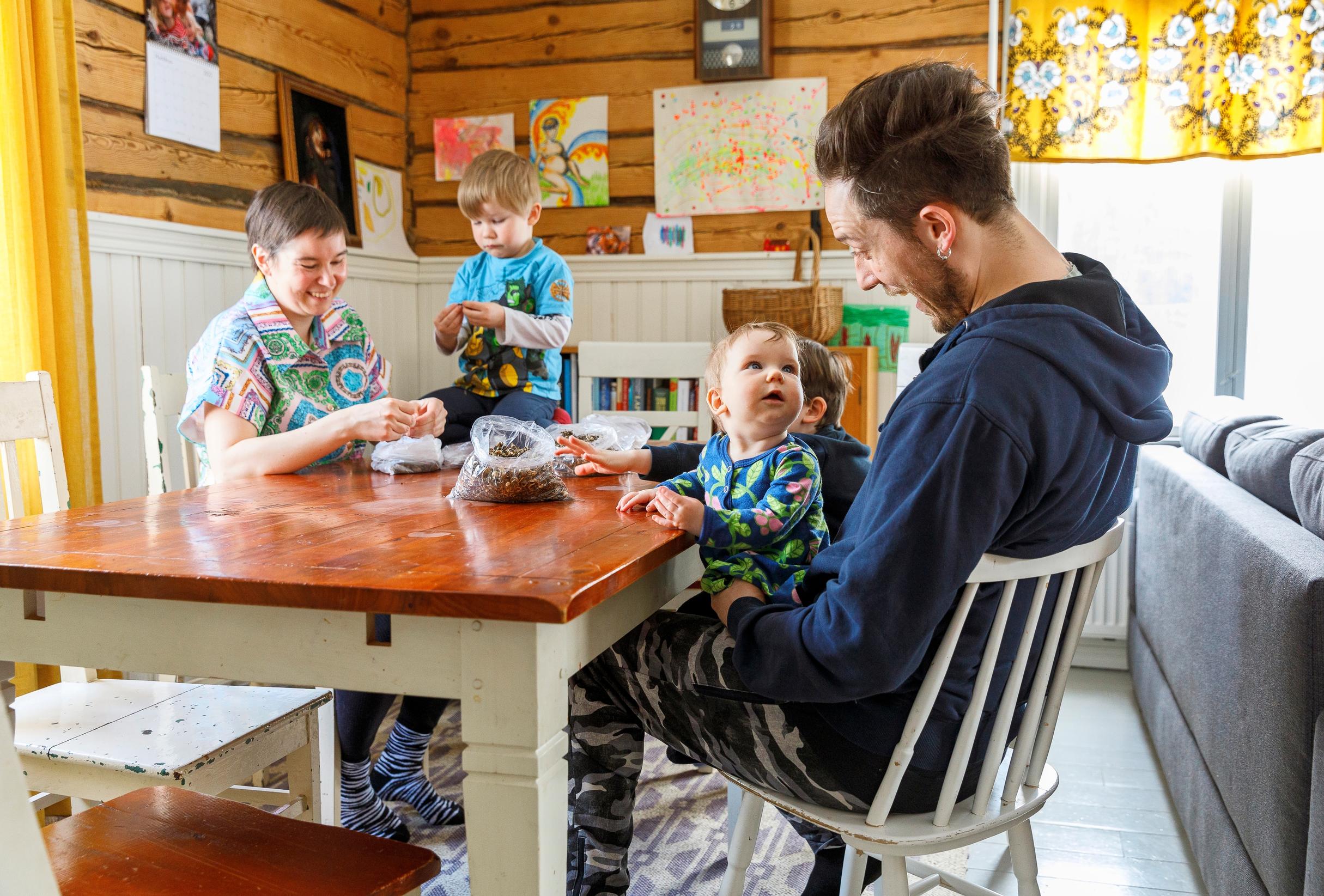
Neither Kim nor Kaisa is a professional gardener. Kim works in information security, and Kaisa, who trained as a language teacher, now works as a transition coach.
Their move toward self-sufficiency has therefore required some learning. A couple of summers ago, Kaisa studied open-field cultivation through an apprenticeship at the nearby Haltija farm. Kim has familiarized himself with permanent bed methods through literature on the subject.
They’ve also received advice from Kim’s parents, who have been growing their own food for decades. As a child, Kim snacked on carrots fresh from the garden, but he wasn’t pressed to take part in weeding duties.
“My mother-in-law is skilled at preserving. We get all kinds of chutneys from Kim’s mom, among other things. We also get our eggs from his parents’ chicken coop,” Kaisa says.
They’ve learned through trial and error while growing their own food.
“Last autumn, our potato harvest didn’t go well. We’d put them in a plastic tub in the root cellar. Inside the plastic container, they rotted. The smell was awful, and losing the harvest was frustrating. But sometimes things like that happen. Next time, we’ll know better,” Kaisa says.
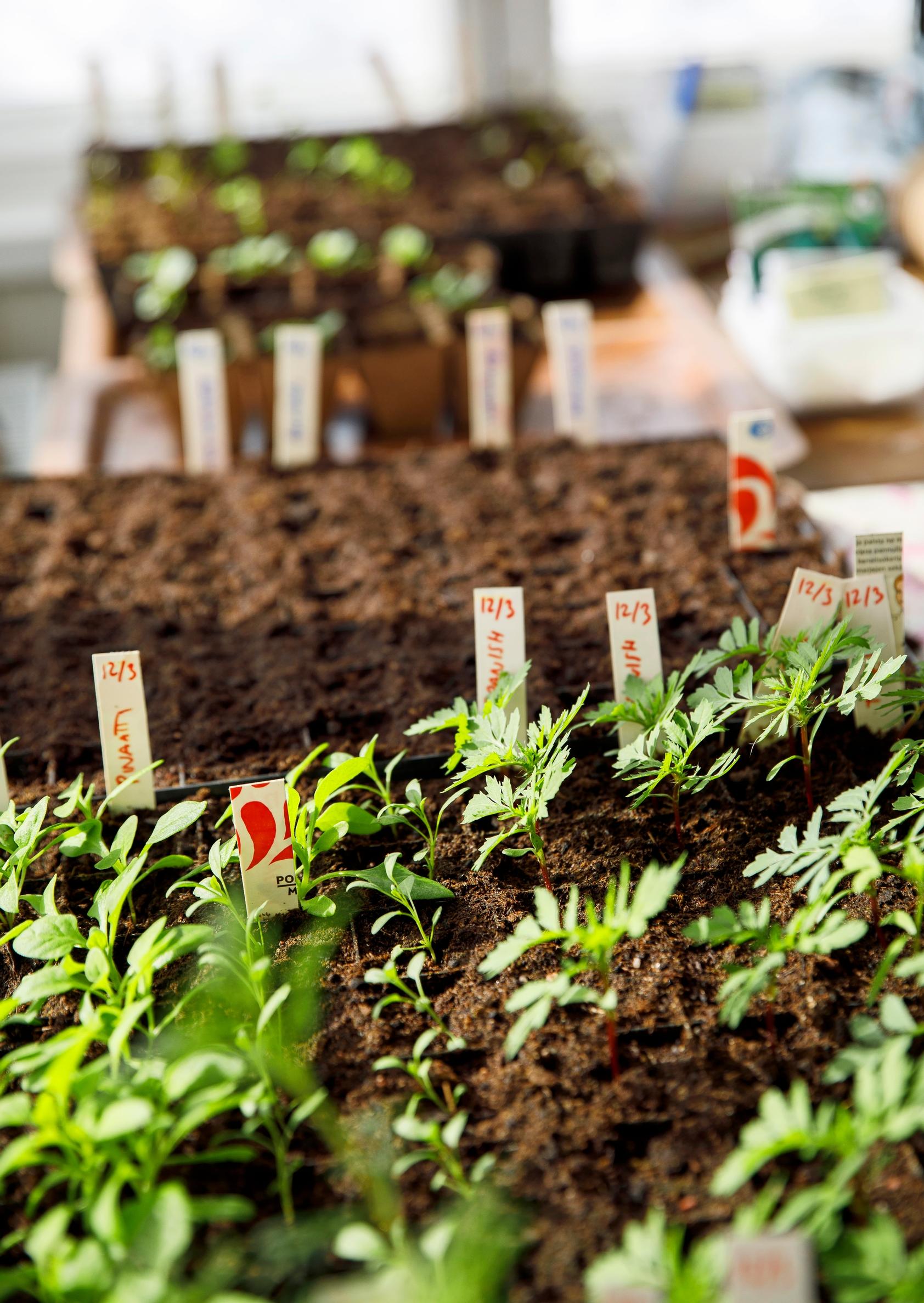
The family’s property is in a temperate microclimate. Thanks to the nearby Lake Pyhäjärvi, the village of Onkemäki is classified as Zone 2 in the system of Finnish plant hardiness zones, whereas many of the other parts of the Pirkanmaa region are Zone 3.
This means many plants considered exotic for the region—like watermelon—can thrive in their yard. Tomatoes flourish in the open beside a sunny wall.
“We keep track of which plants do well and which don’t. We save seeds from the ones that like it here. That’s how we stay self-sufficient in terms of many seeds, too,” Kim explains.
Their two years of cultivating have brought some surprises. In the first year, they were caught off guard by both how time-consuming watering was and the abundance of the harvest.
The summer before last, Kaisa and Kim carried water to the garden in watering cans, which took an hour and a half every evening. Since then, they've installed a watering system.
“Another surprise that first year was the huge yield. We even had enough vegetables to sell. This summer, I plan to sell edible flowers, in particular, to restaurants in Tampere,” Kaisa says.
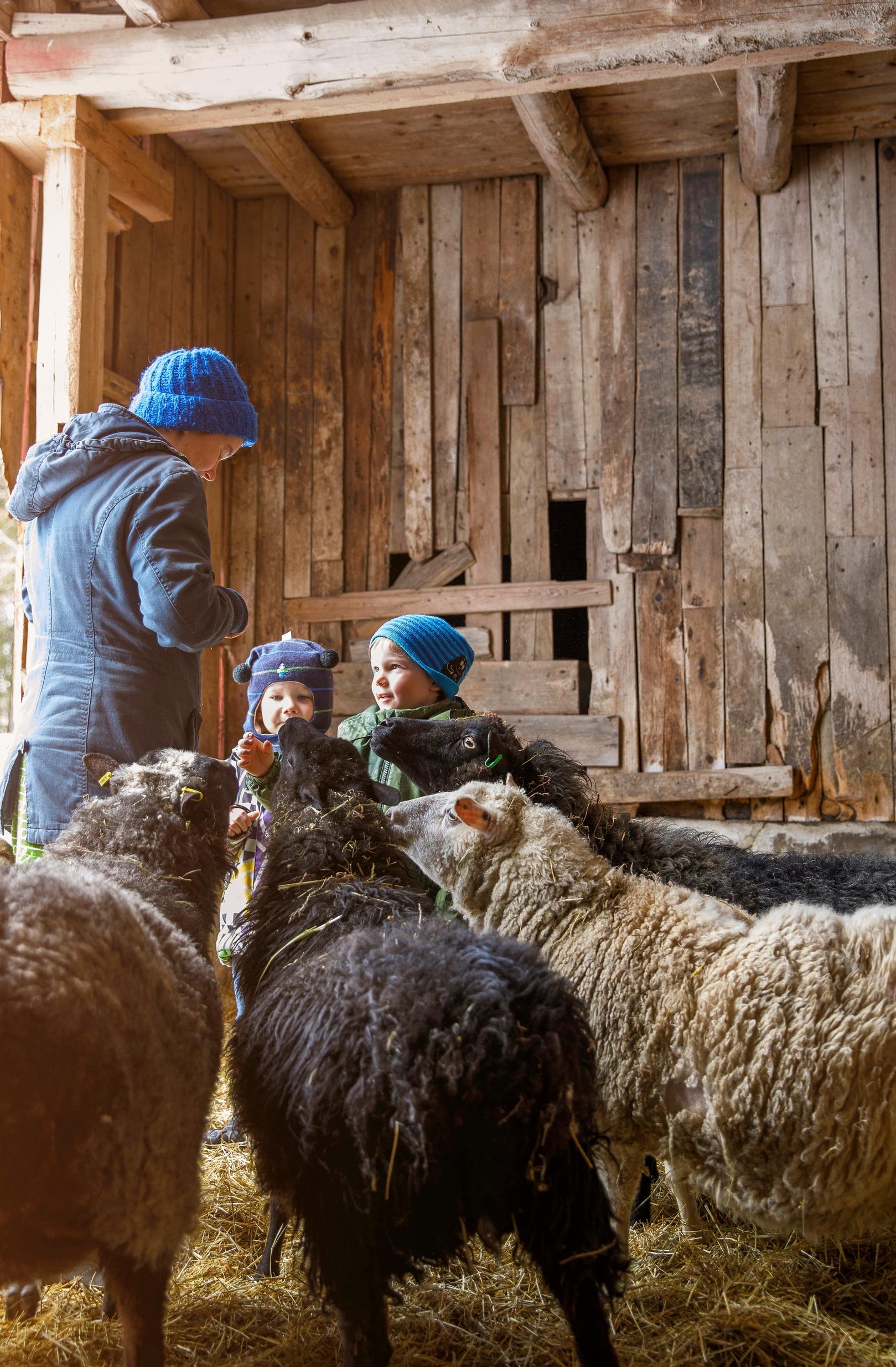
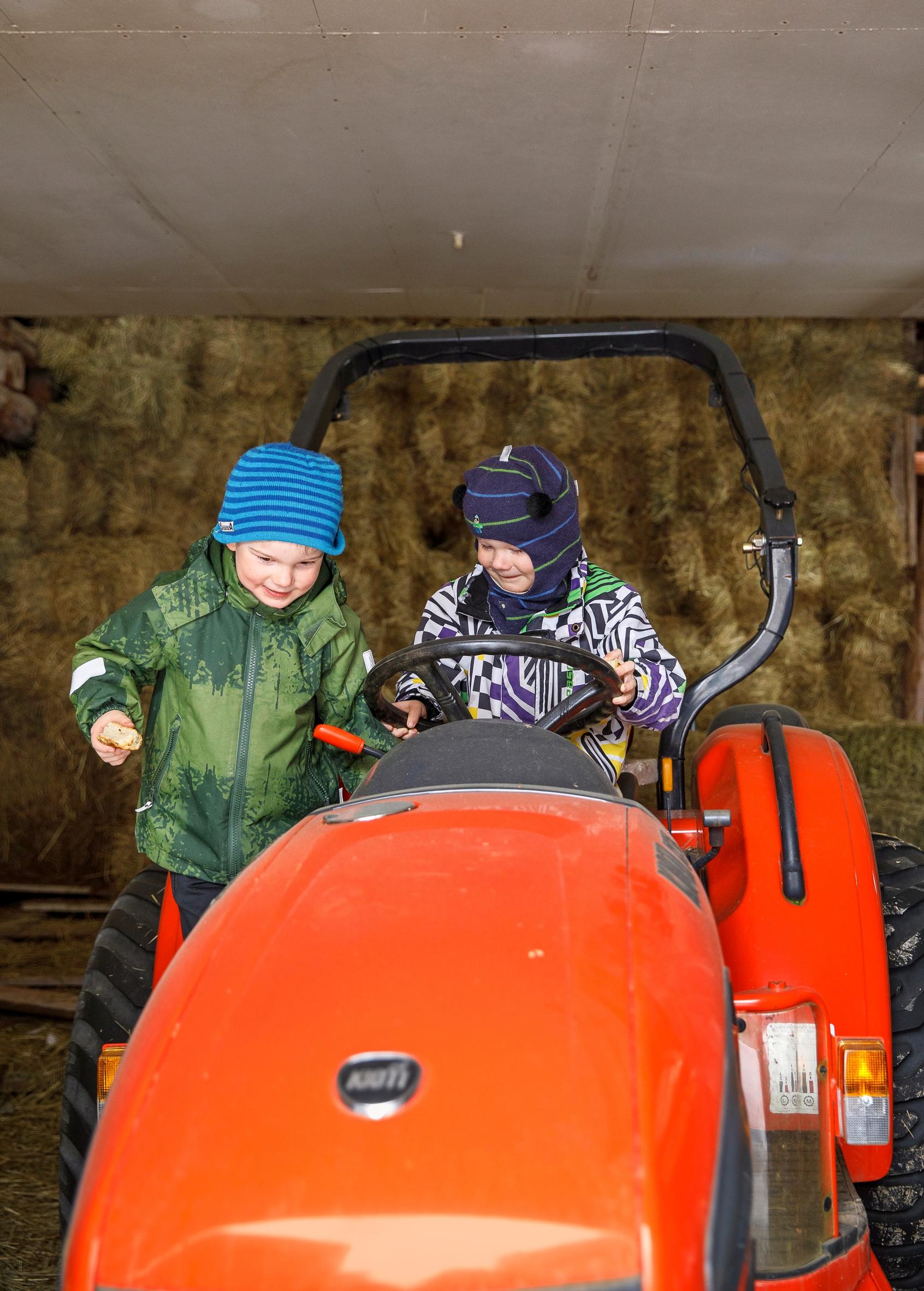
Kim and Kaisa have lived on the old farm for seven years. The house is Kim’s ancestral home: his mother's grandfather built it in 1924, and Kim became its owner when his mother Airi gave him the property as an inheritance advance.
“The house was in rough shape. Plastic flooring testified to the latest renovation, which had been done in the 1970s. An oil heater had been installed in the kitchen, which was less than ideal. There were rat droppings everywhere, and the air smelled of cat urine,” Kaisa recalls.
They undertook a major renovation. Besides redoing surfaces, they replaced wiring and plumbing, turned the indoor sauna into a shower, and switched from oil heating to geothermal. Kim did most of the work with his father, but professionals handled the plumbing and electrical jobs.
When the renovation was done, they turned their attention to the yard. Even now, after two summers and setting up new vegetable beds, there’s still more to do.
“I want a lot more trees and shrubs in the yard. Saskatoon berries, honeyberries, pears, maybe even apricots,” Kim envisions.
“I also want to plant more deciduous trees. They add to the biodiversity. A forest garden also has various microclimates suitable for different useful plants.”
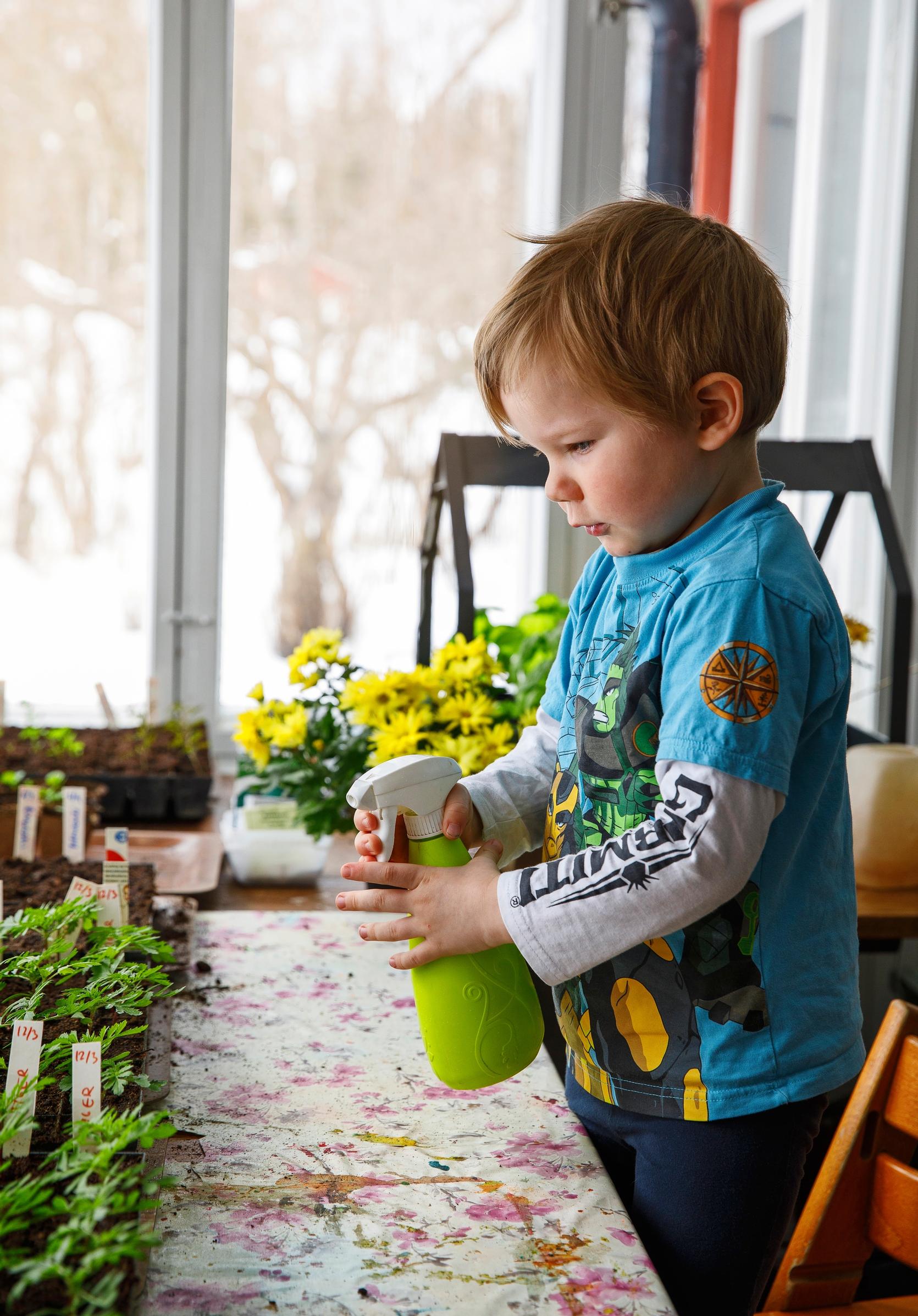
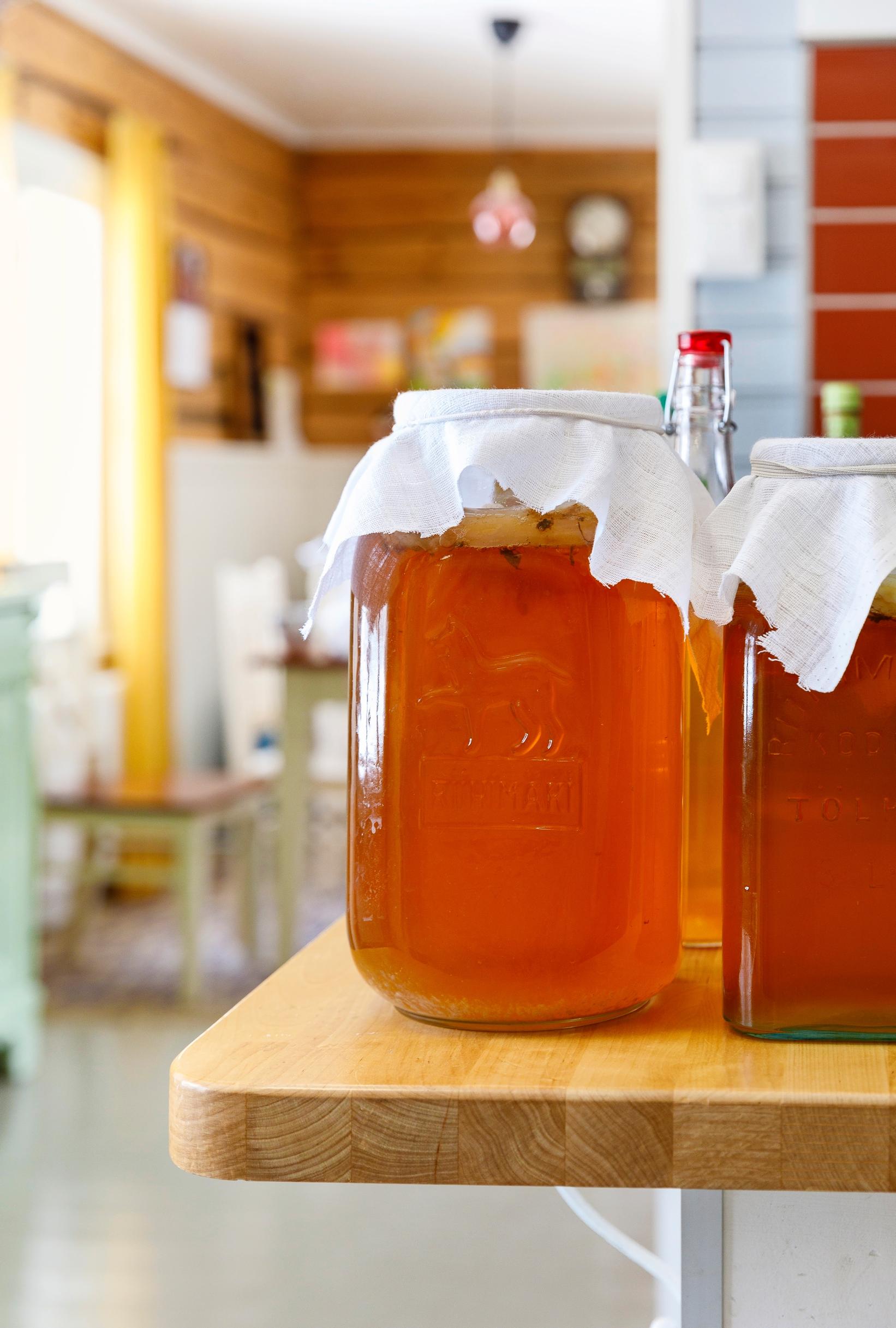
The family’s sons Kaapo, 5, and Touko, 4, mist the seedlings on the veranda. Occasionally, they pop a cinnamon basil leaf in their mouths.
“The boys love helping out in the vegetable garden and get excited when they find porcini mushrooms in the forest,” Kaisa says.
“We observe and explore nature and watch the plants grow together. It’s incredibly rewarding. We want to provide our children with a strong connection to nature.”
The boys have their likes and dislikes when it comes to food grown in their garden. Kaapo’s favorite is carrots, while Touko eats whatever’s on his plate. The middle child especially loves beets and parsley. The youngest Selma is only just learning to eat solid foods.
The kids get to learn at home where food truly comes from. The work begins in spring with seedlings and continues with soil improvement and sowing. Watering and weeding carry on throughout the growing season.
Plump tomatoes, sweet carrots, and crunchy cabbage heads—definitely worth the effort.


